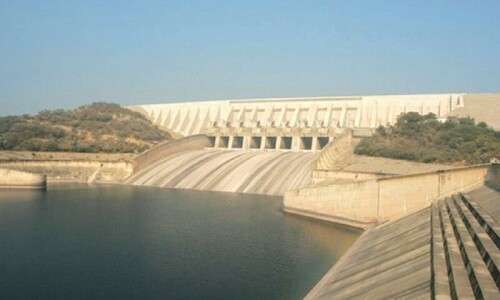Rainfall and Glacier Melt Bring Relief to Dams, Yet Drought Concerns Linger
ISLAMABAD: Recent rainfall combined with glacial melt has brought a slight but much-needed rise in water levels at Pakistan’s key reservoirs, easing fears of an immediate water crisis. Despite this improvement, experts caution that drought risks are far from over.
Over the past month, regions such as Khyber Pakhtunkhwa, northern Punjab, Balochistan, Azad Kashmir, and Gilgit-Baltistan received varying degrees of rainfall, according to the Pakistan Meteorological Department (PMD).
A Rebound in Dam Storage Levels
Pakistan’s two major dams — Mangla on the Jhelum River and Tarbela on the Indus — saw their storage levels rise slightly after hovering near critically low levels. These increases have temporarily averted an acute shortage of water for household use and agriculture.
As per WAPDA (Water and Power Development Authority) data:
- Mangla Dam’s water level increased from 1,066.25 cusecs on March 23 to 1,086.70 cusecs by April 4.
- Tarbela Dam rose from its dead level of 1,402 cusecs to 1,410 cusecs, moving marginally above critical thresholds.
While these changes are positive, the PMD has emphasized that the water situation remains fragile, especially if future rainfall is not consistent.
PMD Outlook: April Could Stay Warmer and Drier
The weather forecast for April indicates that:
- Temperatures will likely remain higher than usual across most regions.
- Rainfall is expected to be slightly below normal in parts of northern Punjab, Kashmir, and nearby areas in KP.
- Southern areas might experience rainfall close to historical averages.
This pattern could place additional stress on already dry areas if rains don’t sustain, warned the PMD.
Soil Moisture and Crop Growth Conditions Improve
The recent precipitation has positively affected soil moisture, particularly in Punjab, helping vital crops like:
- Wheat
- Sugarcane
- Sesame
- Pulses
- Grams
The Sindh region has reported steady growth and ongoing harvesting of wheat, sugarcane, vegetables, and orchard produce. Similarly, Khyber Pakhtunkhwa and Balochistan are experiencing healthy agricultural conditions, although some patches still face moisture stress due to inconsistent rainfall.
Farmers in Balochistan’s coastal belt, southern and western Sindh, and southeast Punjab had previously struggled with mild to moderate drought brought on by months of below-average rainfall.
Drought Risk Remains Despite Some Relief
While many central and northern parts of the country experienced enough rainfall to end long spells of dry days, regions like Turbat, Pasni, Lasbela, and parts of Sindh have seen dry spells extending from 200 to 237 days. Without continued rainfall, the risk of drought worsening in these areas remains high.
The PMD has issued an advisory urging all stakeholders to conserve water resources and adopt drought mitigation strategies. The department highlighted that some of Pakistan’s most vulnerable regions — including the Thar Desert, Cholistan, and coastal Balochistan — could face intensifying water scarcity if upcoming rainfall is inadequate.
Guidance for Farmers
Given the current climate predictions, farmers are advised to:
- Avoid spraying herbicides during strong winds to prevent crop damage.
- Control weeds actively, as their unchecked growth can significantly reduce crop yields.
- Stay updated with weather forecasts to plan their harvesting schedules accordingly, especially for the ripened wheat crop in Sindh and Punjab.
- Use recommendations from local agriculture departments for efficient crop management.
📌 FAQs – Dam Water Levels & Agricultural Conditions in Pakistan
1. What caused the recent increase in dam water levels in Pakistan?
The rise in water levels is mainly due to March rainfall and glacier melt, which added inflows into reservoirs like Tarbela and Mangla.
2. Is Pakistan still facing a drought despite this increase?
Yes, certain regions are still experiencing mild to moderate drought, especially Sindh and coastal Balochistan, due to prolonged dry conditions.
3. Which crops are currently benefiting from the improved soil moisture?
Wheat, sugarcane, pulses, sesame, and seasonal vegetables have all shown better growth, particularly in Punjab and KP.
4. What are the PMD’s rainfall predictions for April?
PMD expects slightly below-normal rainfall in the north, while southern regions may receive rainfall closer to average.
5. What steps should farmers take in response to the forecast?
Farmers should monitor weather updates, manage weed growth, and consult with agricultural experts to optimize their yields.



